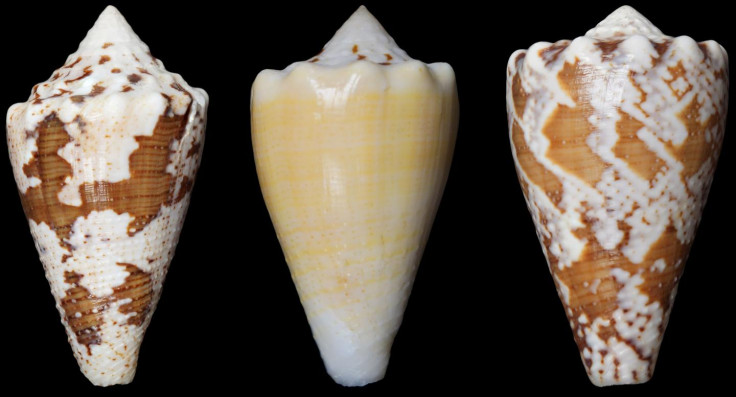Potent compound in snail venom could be painkiller to end opioid epidemic
The compound targets a different pain pathway in the body than that of opioids.

A compound extracted from the venom of a small marine snail may act as a potent painkiller, scientists have found. It could provide a solution to the current opioid epidemic that is currently devastating the US.
Recent estimates by the CDC indicate that 33,000 people died from an opioid overdose (including both prescription opioids and heroin) in 2015 in the country. This amounts to around 91 people every day.
To respond to this crisis, many research teams are investigating new approaches to treat pain. In this latest study, published in PNAS, scientists have tried to find natural compounds that could function as alternative therapies to relieve pain without relying on the opioid pathways.
They studied the little cone marine snail known as Conus regius, whose powerful venom is capable of paralysing and killing its preys.
"We have about a hundred snails in our collection and what we did is screen them all and test their venom. This allowed us to identify Conus regius as an interesting candidate to help us find new painkillers", J Michael McIntosh told IBTimes UK, from the University of Utah Health Sciences, one of the study's authors.
One compound they extracted from the venom is called Rg1A. They have shown that it targets a receptor on a pain pathway distinct from that targeted by opioid painkillers and could thus provide an safe and effective new therapy.
Finding the best compound
Previous studies had already hinted that RgIA was effective in rodents, but the scientists wanted to know if a RgIA analog would be more effective at targeting the human pain pathway receptor alpha9alpha10 nAChR - thereby increasing the chances that the compound would work in humans.
They synthetically engineered 20 analogs of the natural compound RgIA to test how they interacted with the receptor. They found that one known as RgIA4 was able to bind more tightly to it.

The scientists then tested whether RgIA4 was effective at reducing pain in rodents. They exposed rats to a chemotherapy drug that causes extreme cold sensitivity and hypersensitivity to touch –thus making exposure to both cold or touch painful. They then gave the pain-relieving compound to half of the animals. This appeared to relieve them from the pain they were experiencing.
One of the compound's interesting effect was that it lasted for a long time, actually outlasting the presence of the compound in the rats' systems. This reduced the risk of chronic pain developing as the compound's beneficial effects lingered.
"We found that the compound was still working 72 hours after the injection, still preventing pain," McIntosh added in a statement.
"What is particularly exciting about these results is the aspect of prevention. Once chronic pain has developed, it is difficult to treat. This compound offers a potential new pathway to prevent pain from developing in the first place and offer a new therapy to patients who have run out of options," he concluded.
The compound was well tolerated and proved safe for animals so the scientists are not too worried about the pre-clinical trials that should now take place over the next 18 months.
© Copyright IBTimes 2025. All rights reserved.























